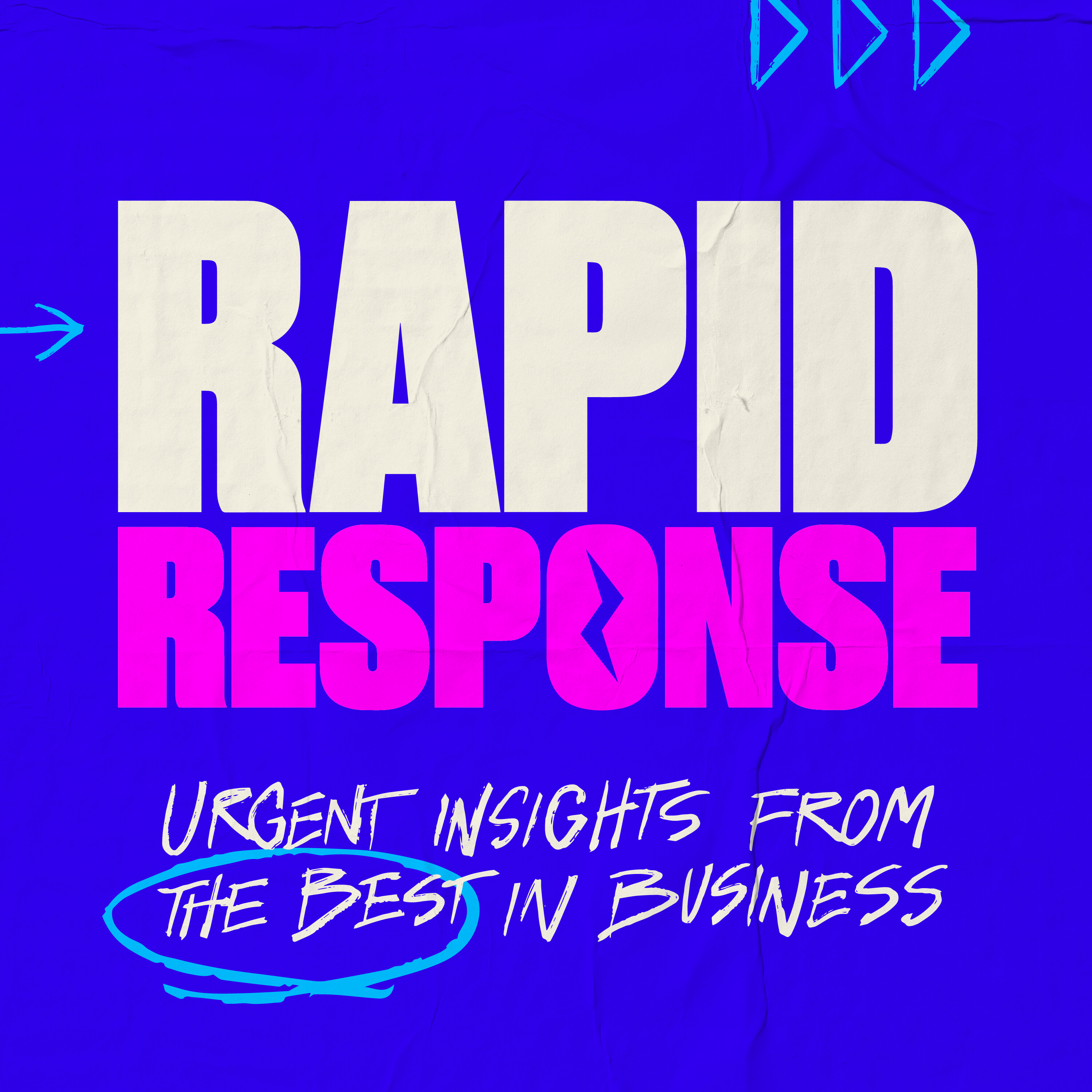
December 3, 2024 • 28min
Rapid Response: How Cost Plus Drugs is revolutionizing pharma, with CEO Alex Oshmyansky
Masters of Scale

Key Takeaways
- Cost Plus Drugs sells prescription medications at cost plus a flat $15 fee for shipping, dramatically reducing prices compared to traditional pharmacies
- The company has grown entirely through word-of-mouth marketing, with $0 spent on advertising
- The high cost of prescription drugs is largely due to Pharmacy Benefit Managers (PBMs) who mark up prices significantly, not pharmaceutical manufacturers
- The company uses robotic technology and automation to manufacture drugs efficiently, focusing on medications that are in shortage
- Rather than waiting for policy reform, Cost Plus Drugs aims to drive change through private sector disruption of the pharmaceutical marketplace
Introduction
Alex Oshmyansky is the CEO and co-founder of Mark Cuban Cost Plus Drugs, which he launched to dramatically reduce prescription drug prices by cutting out middlemen and selling medications at transparent prices. A physician by training who started college at age 13, Oshmyansky cold-emailed Mark Cuban who quickly became involved as an operational co-founder. The company has grown rapidly since launching in 2022 through word-of-mouth adoption, serving millions of customers while expanding into drug manufacturing.
Topics Discussed
Origins and Business Model (03:57)
Oshmyansky explains the core business model of Cost Plus Drugs:
- Sells medications at true cost plus 15% margin, $5 pharmacist fee, and $5 shipping
- Bypasses traditional PBMs who mark up drug prices significantly
- Example: Statins that cost $200 elsewhere are available for ~$5
- Estimated that 30-40% of drug spending goes to PBM profits
Manufacturing Strategy (09:55)
The company has expanded into drug manufacturing to address shortages:
- Uses robotic technology with sterile chambers for efficient production
- Focuses on manufacturing drugs that other companies won't make
- Received DARPA grant to develop AI-enhanced manufacturing pods
- Can switch between different medications within 4 hours
Growth Through Word of Mouth (18:05)
Cost Plus Drugs has grown organically without marketing spend:
- $0 spent on marketing - relies entirely on word-of-mouth
- Growth happens through social media communities sharing savings
- Pattern: No sales for a month, then rapid adoption in specific patient communities
- Mark Cuban's platform provides visibility but isn't primary growth driver
Industry Dynamics and Resistance (19:06)
The company faced initial resistance from manufacturers:
- PBMs threatened to boycott manufacturers who worked with Cost Plus Drugs
- First manufacturer required private labeling to avoid association
- Success led to more manufacturers willing to partner openly
- Manufacturers actually make higher margins selling through Cost Plus Drugs
Driving Industry Change (20:51)
Oshmyansky discusses strategy for reforming drug pricing:
- Focus on private sector reform rather than legislation
- Target large employers who ultimately pay for most prescriptions
- System complexity helps maintain status quo
- Need to break PBMs' lock on the marketplace
Personal Background and Approach (23:37)
Insights into Oshmyansky's background and leadership philosophy:
- Still practices radiology one shift per week to stay grounded
- Started in special needs classes as Russian immigrant
- Studied law during medical residency
- Values patience in dealing with healthcare bureaucracy
Future Vision and Growth (28:04)
Discussion of company's progress and plans:
- Estimates only 3% along total journey
- Expanding partnerships with major pharmaceutical companies
- Growing institutional/bulk sales business
- Forcing industry response - competitors launching similar programs
- Working to bring more transparency to opaque market
Conclusion
Cost Plus Drugs represents a significant disruption to the traditional pharmaceutical marketplace by providing transparent pricing and eliminating middleman markups. Through a combination of direct-to-consumer sales and strategic manufacturing, the company has grown rapidly while forcing larger industry players to respond. Rather than waiting for policy reform, Oshmyansky is driving change through private sector competition, though he estimates the company is only 3% along its journey of transforming drug pricing and access.
The success demonstrates how entrepreneurial innovation can address seemingly intractable healthcare challenges, particularly when combining technical capabilities (robotics, automation) with business model innovation (transparent pricing, direct distribution). The company's ability to grow organically through word-of-mouth while turning potential adversaries (drug manufacturers) into allies suggests the model has strong product-market fit and is delivering real value to multiple stakeholders.




